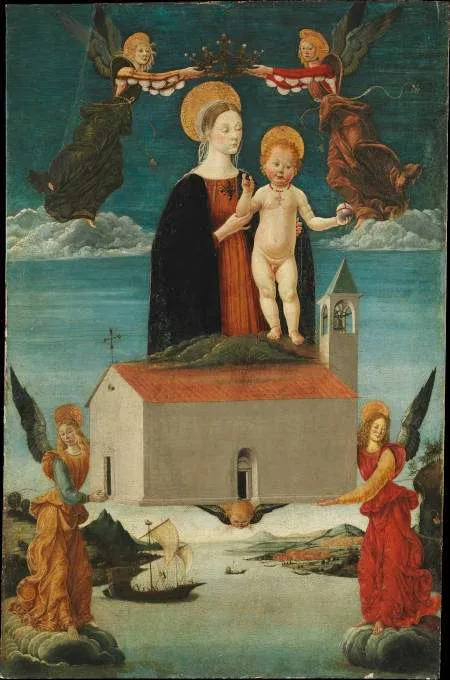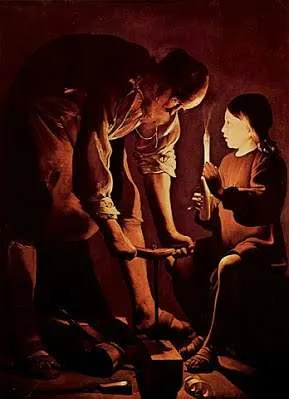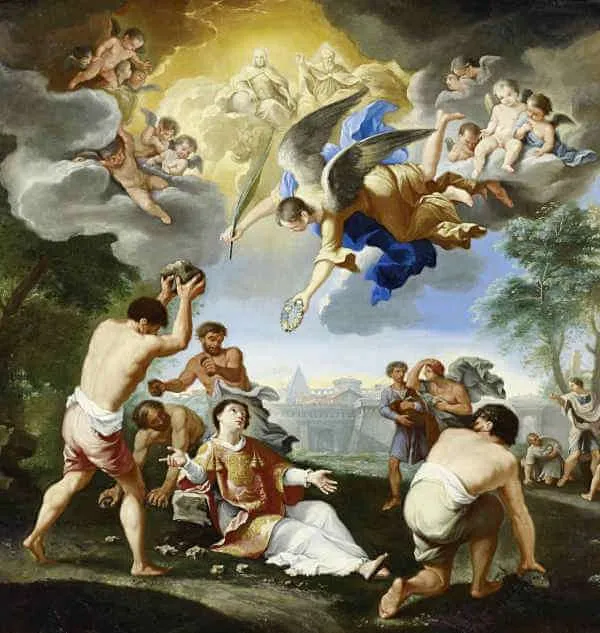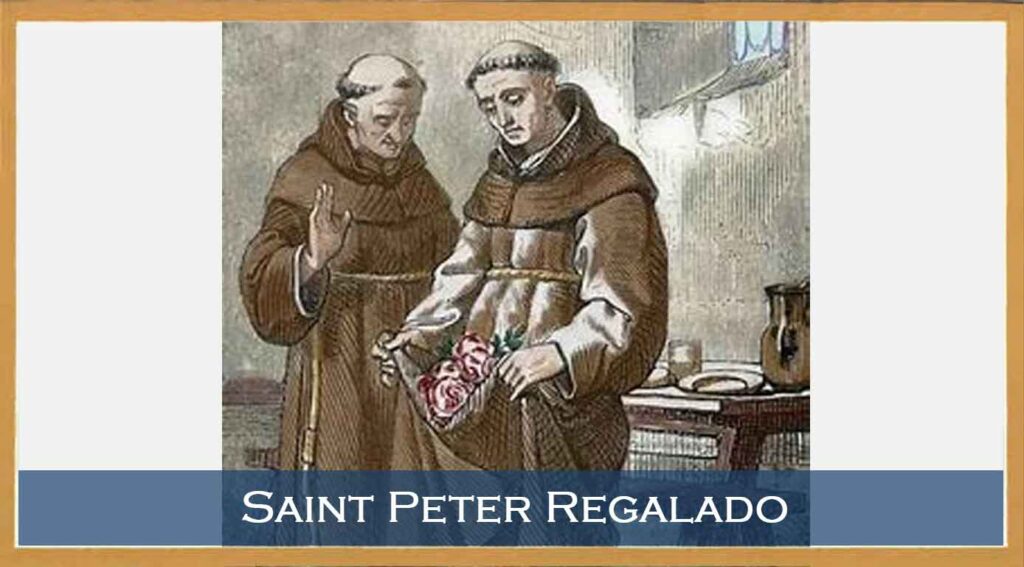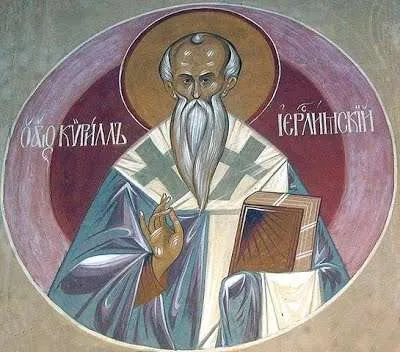Patron Saint of aviators and builders
Today’s memorial celebrates one of the most revered relics within the Christian world—The Holy House of Loreto. This small house, which measures 31×13 feet, rests today in Loreto, Italy, inside the Basilica of the Holy House. In the first century, the Apostles revered the Holy House when it was attached to the opening of a cave that completed the home of Jesus, Mary, and Joseph in Nazareth. It is also believed to have been the place where the Annunciation took place, making it the location where the Word became flesh within the womb of the Blessed Virgin Mary. Some traditions also state that the Blessed Virgin Mary was born and raised in this house, but other traditions state she was born in Jerusalem and raised in the Temple. Within the house is the “Altar of the Apostles,” traditionally believed to have been built by the Apostles after the Ascension of Jesus into Heaven, with Saint Peter being the first to offer Mass there. There is also a wooden statue in the altar of the Blessed Virgin Mary holding the Christ Child. The statue of Our Lady of Loreto is a replica of the earlier statue that was destroyed in a fire in the early twentieth century.
This Holy House has a long and legendary history, the truth of which will only be known in Heaven. In the fourth century, one tradition holds that Emperor Constantine the Great, with the help of his mother Saint Helena, commissioned the building of a basilica over the Holy House in Nazareth at the same time the Church of the Holy Sepulchre was built in Jerusalem and the Church of the Nativity was built in Bethlehem. At least by the end of the fifth century, pilgrimages were made to the Holy House in Nazareth.
In the seventh century, Muslims invaded the Holy Land and destroyed the Church over the Holy House. The ruins remained until the Crusaders took back the Holy Land in the eleventh century and built a new Church over the Holy House. Muslims retook the territory of Nazareth in the late twelfth century but permitted the Franciscans to maintain the Holy House. In 1260, however, the invaders destroyed the basilica. Fighting continued until the Christian Crusaders were completely driven out in 1291.
Just prior to the Crusaders leaving the port of Acre, legend holds that on May 12, 1291, angels transferred the Holy House in Nazareth to the small town of Tersatto, modern-day Trsat, Croatia, where it remained for three and a half years. The locals were shocked at its arrival. When they entered, they saw the altar with a cedar statue of the Blessed Virgin Mary holding the Christ Child. A few days later, the Blessed Virgin Mary appeared to a priest in the Holy House, revealing to him its sacred origin. The Blessed Mother then healed the priest of an illness he had been suffering from as proof of what she had said. The Holy House quickly became a place of pilgrimage for the locals and a much-beloved object of devotion. The legend continues that on December 10, 1294, the house was once again picked up by angels and moved to Italy. The heartbroken people of Tersatto built a replica and wrote the words, “The Holy House of the Virgin Mary came from Nazareth on May 10, 1291, and stayed here until December 10, 1294.” Today the spot is marked by the Shrine of Our Lady of Trsat and a Franciscan monastery, which make up one of the most important pilgrim sites in Croatia.
Upon the arrival of the Holy House in Italy, legend holds that it landed on a hillside overlooking the port of Ancona where it stayed for nine months. Today that spot has a shrine, and the town is called Posatora, from the Latin posat et ora, meaning “to land and pray.” The legend continues that in 1295, the Holy House moved about twenty miles south to a laurel grove near the town of Recanati. Eight months later, the Holy House was transported to a farm owned by two brothers of the Antici family, and four months later it was moved for the final time to the middle of a public road where it sits today, in modern-day Loreto, Italy. The name “Loreto,” could be derived from the Latin word lauretum, which means “place of laurels.”
Upon its final arrival, the people did not know where the house came from until the Blessed Virgin Mary appeared to a hermit, telling him the history and significance of the house. The hermit then told the townspeople, who verified the story by traveling to Tersatto and then to Nazareth. Today, the Holy House is enshrined in a marble frame; its marble exterior sits inside the large Basilica of the Holy House in Loreto.
In the year 1900, a member of the papal household is said to have discovered documents in the Vatican archives that offer a different story about the transfer of the Holy House. In 1291, just prior to the Crusaders leaving the Holy Land, a noble Byzantine family named the Angeli family paid for the removal of the relic and its transfer, probably by ship, to Croatia and then Italy. The name “Angeli,” which means “angels,” could account for the origin of the tradition that angels carried the house from Nazareth. Certainly, this is a very plausible explanation. However, it’s interesting to note that the eighteenth century mystic, Blessed Anne Catherine Emmerich, stated, “I have often in vision witnessed the transporting of the Holy House to Loreto. For a long time, I could not believe it, and yet I continued to see it. I saw the Holy House borne over the sea by seven angels. It had no foundation, but there was under it a shining surface of light…”
Before discounting the miraculous transportation of the house, it is worth noting some scientific evidence. First, the mortar and stones used in the walls of the house come from the Nazareth area and are not found anywhere in Italy. Second, there are no cracks in the walls, indicating they were never dismantled and glued back together. Third, the size of the house matches perfectly the foundation in Nazareth from where it is believed to have come, but it would have been difficult to rebuild the house to the original dimensions. Fourth, in the thirteenth century, transporting a house, without first completely dismantling it, would have been nearly impossible. Fifth, the house landed on a public road, and the road can be seen under the foundation of the house today. At that time, it was not permissible to build a house on a public road, so if it was reconstructed, why choose that spot? Lastly, the fact that there is such a strong tradition of devotion to the house in Croatia and also where the house initially landed in Italy suggests that the miraculous moving of the house truly took place. For these reasons, some might argue that the angelic transportation of the Holy House is actually a far more likely conclusion than the physical transportation of the house by the Crusaders at the direction of the Angeli family.
Regardless of how the Holy House arrived in Italy, it remains a place of deep devotion. Over the centuries, more than 150 canonized saints have made pilgrimages there. Many popes, kings, queens, and other royalty have visited the House, and countless others have been inspired by the story.
As we celebrate this Holy House today and honor the image of Our Lady of Loreto that resides in that house, ponder Jesus, Mary, and Joseph living there. That house should be seen as an image of our souls in which the Christ Child lives and dwells. When Christ lives within us, our homes will better reflect the environment of the home of the Holy Family. The charity and every other virtue lived within the walls of that home must also permeate our lives, families, and our entire world. Only through the prayers of the Blessed Virgin Mary and the grace of her divine Son will this be possible.
Source: https://mycatholic.life/saints/saints-of-the-liturgical-year/our-lady-of-loreto/

